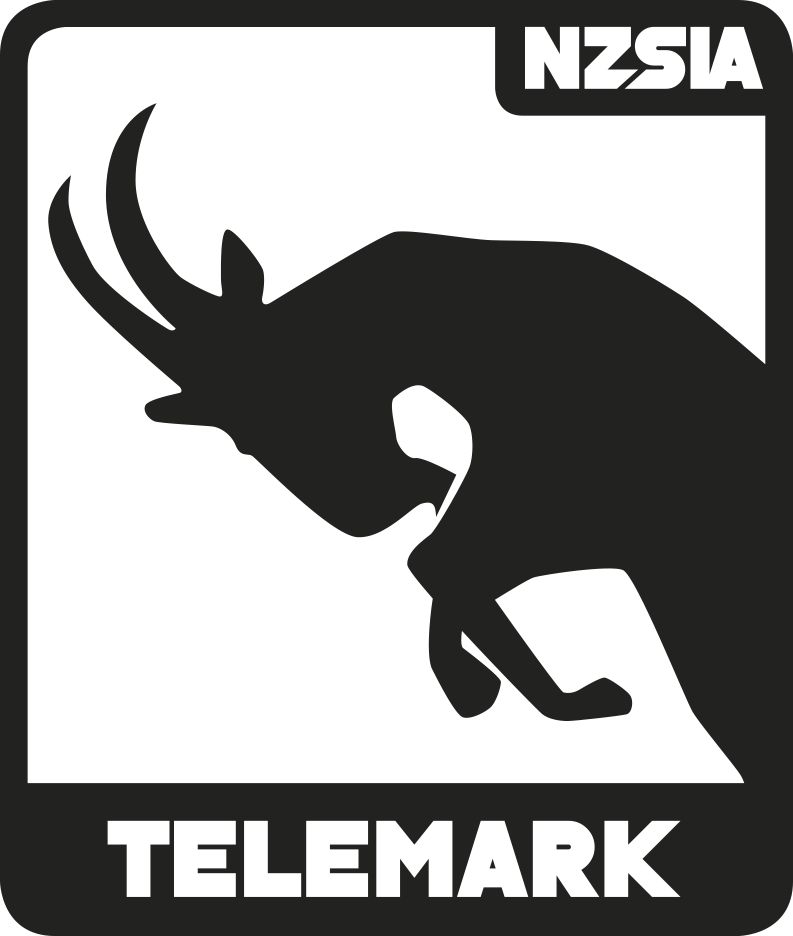Turn Phases. Understanding turn phases helps instructors and skiers identify what’s happening during different parts of a turn. The turn can be divided geometrically into thirds, split by the fall line, or described by terrain-influenced shape. Each phase—create, control, and release—requires specific ski and body movements for effective performance. As skills progress, these phases shift and adapt depending on terrain, speed, and skier intention. Diagrams and drills like J turns and linked turns provide visual and practical ways to apply this framework at all levels
![]()
Create, Control, Release
Understanding the ideal ski and body movements in each phase of a telemark turn allows instructors to effectively perform, teach, and analyze turns. Each phase requires specific actions for an efficient and successful turn.
Create Phase
Ideal Ski Performance:
- Begin increasing edge angle on both skis to create grip.
- Adjust the steering angle to initiate a direction change.
- Manage the pressure shift from the old outside ski to the center of the new outside ski.
Ideal Body Performance:
- Overall: Direct and control the center of gravity (COG) to move with the skis.
- Active stance & balance: Re-center the COG over the base of support (BOS) to maintain a balanced stance.
- Ski-to-ski balance: Establish balance through the center of the outside ski while maintaining appropriate pressure on the inside ski for a parallel and efficient lead change.
- Steering: Control leg rotation into the turn to realign the legs with the body, releasing separation from the previous turn.
Edging: Incline the legs inside the turn to develop grip with the snow.
Control Phase
Ideal Ski Performance:
- Continue increasing edge angle, utilizing ski design for effective direction change.
- Maintain a consistent turn shape by managing steering angles.
- Direct pressure through the center of the outside ski. while maintaining appropriate pressure on the inside ski for a parallel and efficient lead change.
Ideal Body Performance:
- Overall: Direct the COG inside the BOS for stability.
- Ski-to-ski balance: Adjust flexion and extension of both legs to maintain balance over the outside ski while using inside ski balance to sustain the lead change.
- Active stance & balance: Continue moving forward with the skis down the fall line to stay centered.
- Steering: Keep the upper body stable while allowing the legs to incline and rotate, creating separation to manage turn forces.
- Edging: Control the inclination of the legs and body to refine edge angles.
Release Phase
Ideal Ski Performance:
- Reduce edge angle to flatten the skis.
- Maintain steering angle to keep ski direction across the hill.
- Shift pressure to assist with lead change.
- Control the release of pressure to maintain consistent ski-snow contact.
Ideal Body Performance:
- Overall: Direct and control the movement and height of the COG as it transitions across the BOS into the new turn.
- Active stance & balance: Engage muscles to sustain a centered stance.
- Ski-to-ski balance: Flex the outside leg and extend the inside leg to initiate weight shift and assist with the upcoming lead change.
- Steering: Maintain upper body discipline as the legs release laterally and rotationally, preserving separation.
- Edging: Control lateral movements of the legs and body to flatten the skis.

